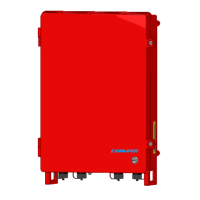D-MBR 3707-3708 PS NFPA CLASS A SIGNAL BOOSTER
PRODUCT DESCRIPTION AND USER’S MANUAL
www.cobham.com/wireless
Date: 17-Jan-16
Cobham Wireless – Coverage
Page | 10 Rev. 1.1 Doc. No.00060CDUM
2.2.3.4 Verifying Isolation between Donor and Service Antennas
Note the following:
• The isolation between the Donor and Service antennas is critical especially for high gain, outdoor
applications.
• For proper operation of the Signal Booster, it is recommended that the isolation between the
Donor and Service antennas be at least 15dB higher than the Signal Boosters set gain. (Lower
isolation can lead to high in-band ripple, oscillations and low signal quality.)
• Ensure proper vertical or horizontal distance separation between Donor and Service antennas
To measure the isolation, proceed as follows:
1. Inject a known signal from a signal generator into one antenna (preferably the Donor antenna).
2. Measure the coupled output from the Service antenna, using the Spectrum analyzer and LNA if
applicable.
3. Perform this procedure across the frequency range of both the Uplink and Downlink bands.
4. Register the lower result for system operation.
2.3 Required BTS Information
Required BTS Information
• BTS channels
• BTS output power per channel
• BTS antenna gain
• BTS antenna height and distance from antenna site
2.4 Selecting the Booster Location
When selecting a location, verify the requirements described in this section are met.
2.4.1 Installation Location Criteria and Environment
WARNING!! The signal booster must always be installed vertically with the connectors on
the underside for protection (see 3.3.3.4). Horizontal installation on a bench for long time may cause
damage to the signal booster due to over-heating.
The following criteria should be considered when selecting the Signal Booster installation site
location:
• Application type – indoor or outdoor
• Distance from antenna site and BTS antenna height.
It is recommended that the installation location be as close as possible to the antenna site in
order to maintain the cable loss to a minimum.
• General surroundings and accessibility of location
• In outdoor applications it is recommended to install a cabinet or a shielding sunroof for further
protection against weather wear.
• Use a suitable mounting surface, such as a flat back rigid wall.

